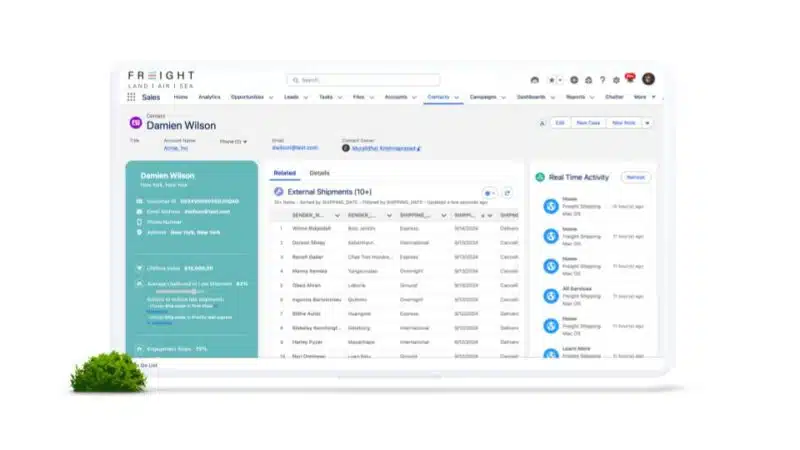Data Cloud represents the ‘biggest upgrade’ in Salesforce history
Salesforce triples down on Data Cloud with new capabilities including a close connection with the Agentforce AI bots.
“Data Cloud is the heartbeat of the Salesforce platform,” said Rahul Auradkar, using Salesforce’s new mantra. “Data Cloud is the core of how Agentforce works,” he added.
Auradkar, EVP and GM, Unified Data Services (Data Cloud) and Einstein at Salesforce was speaking remotely to the press on the eve of Dreamforce — and he had new Data Cloud capabilities to announce:
- The ability to handle new unstructured data types, including audio and media such as webinars and calls.
- Fifty new connectors for apps like Square, Stripe, Meta and Splunk, growing the connector ecosystem that also supports many data lakes, warehouses and third-party systems.
- A sub-second real-time pipeline for data to pass through, from ingestion to activation “and everything in between” to power Einstein personalization.
Auradkar also described the fast-evolving Data Cloud as “the biggest upgrade to the Salesforce platform in our history.”

Data Cloud, meet Agentforce. Salesforce is also emphasizing the close coordination between the Data Cloud CDP and Agentforce, its new AI agent presented as an evolution beyond the AI copilot. Data Cloud now surfaces insights from unstructured audio and video data to Agentforce, giving it a more complete context for its actions.
Similarly, when a customer engages with an Agentforce agent, Data Cloud surfaces insights and context from email correspondence, past service events, voicemails, etc., to help Agentforce understand the customer’s needs.
Data Cloud also recommends next-best steps for Agentforce, like generating follow-up emails or delivering chat summaries to human representatives.
Dig deeper: Salesforce launches new, ‘more trustworthy’ generation of AI bots
Shout out to the data lakes. Data Cloud not only works on data already housed in Salesforce applications. It also has “zero copy” capabilities to draw on data from third-party networks such as Databricks and Snowflake. The emphasis on these capabilities reflects the trend toward enterprises relying on data lakes and warehouses to store customer and enterprise-wide data.
Asked whether Data Cloud was a competitor to cloud-based data lakes like Databricks and Snowflake, Auradkar said: “We co-exist with them.” He also emphasized that Data Cloud not only represents the biggest upgrade to the Salesforce platform; “It’s also an upgrade to Databricks and Snowflake.”
Why we care. It’s not a surprise given Marc Benioff’s impassioned touting of Data Cloud over the past year, but Salesforce is clearly intent on insisting this is not just a smart CDP activating a troop of bots, but a radical transformation of its offering. Certainly, the recent announcements, including today’s, do represent more significant changes than tinkering with various versions of Customer360 applications. We’ll wait to see just how powerful these new capabilities are — and how Adobe and Oracle respond.
Huge AI investment through Salesforce Ventures. Another Dreamforce announcement worthy of note is the new $500 million AI fund administered by Salesforce Ventures. That brings the total funding for AI start-ups to $1 billion over the past eighteen months.
“Salesforce Ventures is a leader in helping startups scale market-changing innovations in the cloud, and
we’re expanding on that heritage to bring the power of AI to all parts of the enterprise,” said John
Somorjai, president of Salesforce Ventures in a release. “The first $500 million we invested in this technology has powered growth across our AI ecosystem, and we’ll continue to incorporate learnings from across our business, partners, and customers to help build the AI leaders of tomorrow.”
Contributing authors are invited to create content for MarTech and are chosen for their expertise and contribution to the martech community. Our contributors work under the oversight of the editorial staff and contributions are checked for quality and relevance to our readers. MarTech is owned by Semrush. Contributor was not asked to make any direct or indirect mentions of Semrush. The opinions they express are their own.
Related stories